Art Historical Babies Past and Present
Adele Enersen photographs her dozing daughter Mila in a variety of poses and scenes, often drawn from art history. The visual similarities between her homemade work and her sources is pretty cool, as is its relationship to art history. What other options for inspiration could Enersen pursue?
Through my late evening internet wanderings, I happened upon this majestic piece of baby art:
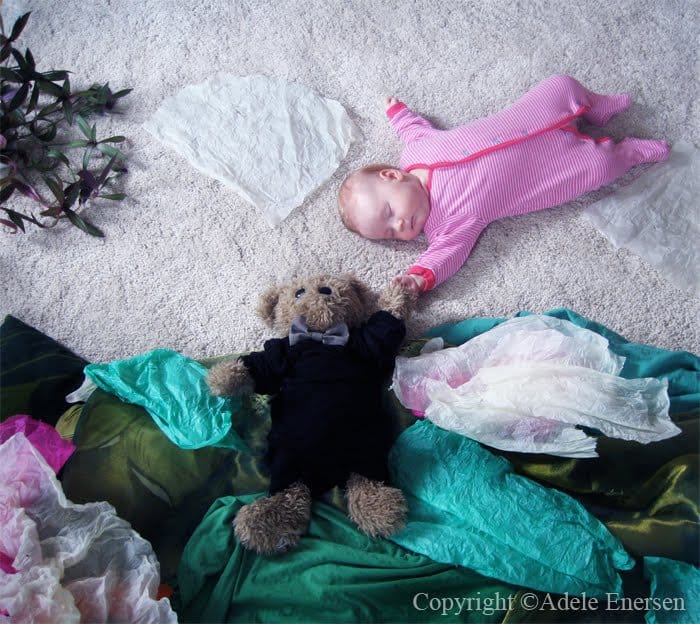
Adele Enersen photographs her sleeping child in a variety of artistic poses and backgrounds for her blog Mila’s Daydreams, including an interesting remake of Marc Chagall’s famous “Promenade” (1917-18).

Posed on the floor and photographed from above, the photos have a two-dimensional quality that brings to mind the surface flatness of Chagall’s work, as well as the fractured space of medieval figuration, two dimensions that burst at the seams to represent three.
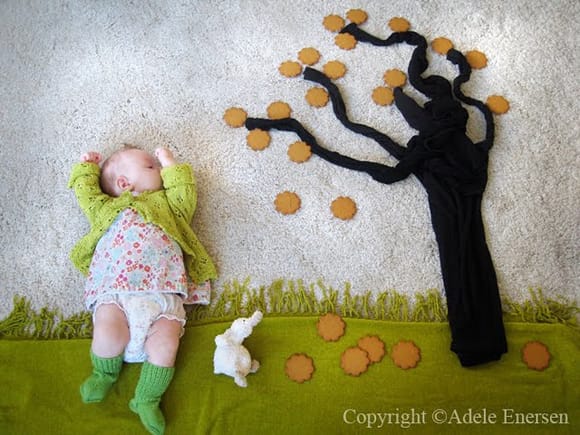

The complexity of the staged photos waxes and wanes with Enersen’s ambition. Though the images are totally cute and a joy to look at, there’s also some serious artistic decision-making behind how they look. The presence of the real dreaming child becomes a solemn, stabilizing element.
This one is my favorite:
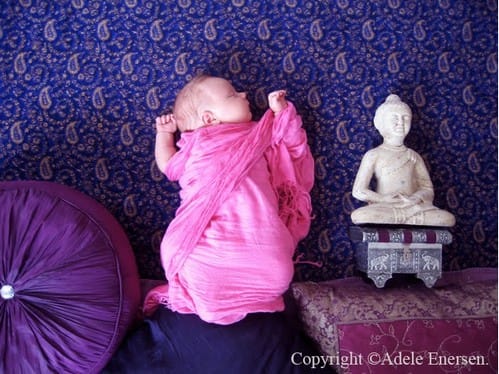
The sense of mystery, Mila’s stretched pose, the deep colors and the lack of gravity are all earnestly and surreally serious. It’s a hard picture to look just once at, fit for a 19th-century Orientalist:
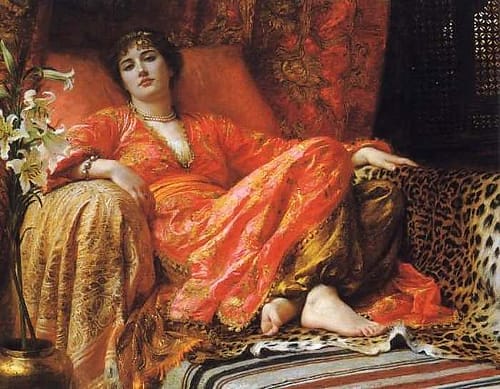
It’s fun to come across these sort of random collisions of art history and something that might easily be passed off as kitsch, but clearly isn’t. What sets this work apart, I think, is the visual sensitivity and the genuine sense of fun and play that Enersen clearly brings to her photos. Compare Enersen’s off the cuff creativity with Anne Geddes’s terrifically kitschy photos of babies nestled in outstretched hands or dressed in bumblebee costumes laboriously manipulated in Photoshop into flower pictures, and it’s pretty clear that Enersen comes through with the truer emotion. Though her baby pics do sometimes dip into the cliche, they have a refreshing sense of artistic vitality, like fun studio experiments.
Tracking the linking visual patterns between Enersen and art history just shows that our aesthetic modes of representation never change completely. But best not to be too serious either.
What else could the photographer use as an artistic source?

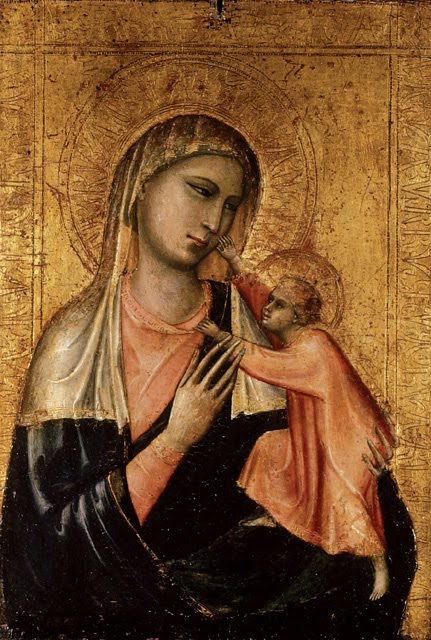

[Final image is NSFW if you don’t work in a museum or cultural institution!]
[Just a warning.]

…sorry, too soon.




